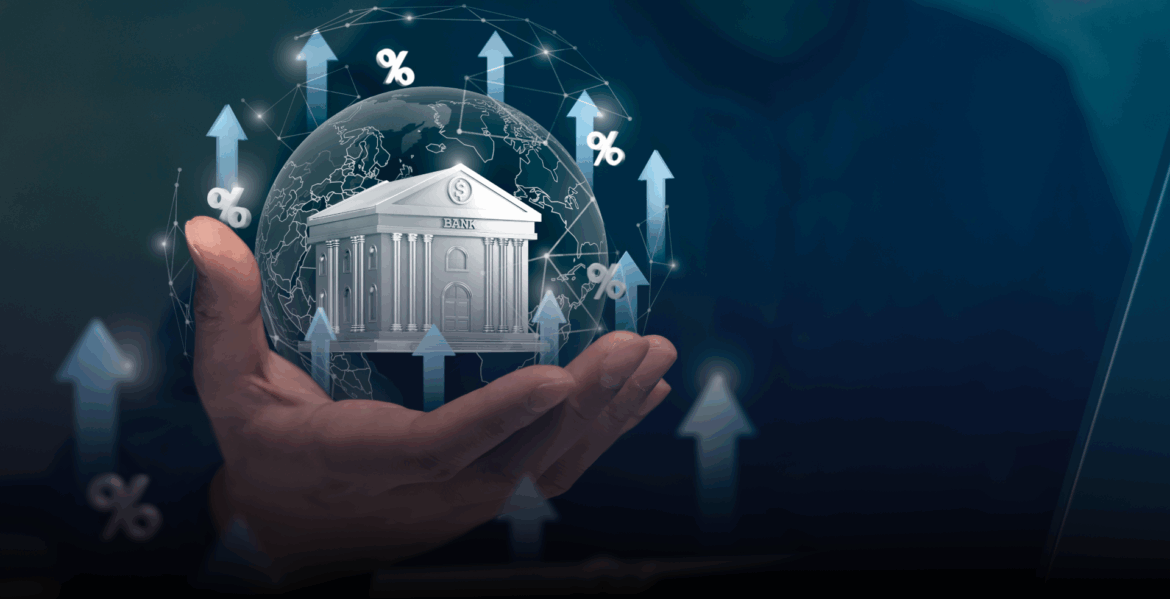Overview
Sustainable finance incorporates environmental, social, and governance (ESG) factors into financial decision-making, and it aims to foster sustainable economic progress while safeguarding the long-term stability of financial systems. This area has grown significantly in the past two decades, driven by multiple factors such as heightened awareness around material environmental and social issues and the need to manage such risks (e.g., reputational or legal), the rising significance of corporate social responsibility, and the advent of new investment products and strategies focused on ESG criteria.
When implemented properly, sustainable finance supports economic expansion while addressing environmental or social concerns. For example, sustainable finance can be viewed as a climate and ESG risk management tool, since it requires financing customers’ transition with climate or ESG adaptation strategies, including within carbon-intensive sectors, and allocating new funds to green projects. In this way, sustainable finance solutions contribute to long-term economic stability and overall resilience, encouraging businesses to adopt sustainable practices and reduce negative environmental and societal impacts. Integrating ESG factors into financing decisions helps to identify, assess, and mitigate long- term risks associated with environmental and social challenges.
Framework and Methodologies
Banks and other financial institutions develop a sustainable finance framework to facilitate sustainable finance transactions, of different formats, to meet their sustainability commitments across various categories of projects. A framework ensures a structured way of raising and deploying capital, creating confidence that such investment activities are meeting intended sustainability objectives.
A variety of sustainable investment products can be employed by banks and financial institutions, alongside other institutions (e.g., multilateral, private sector corporate, and municipal entities), including sustainable debt and equities (see the ‘Annexure’ for more definitions of available sustainable investment products). A strong sustainable finance framework defines the investment products that are included within the scope of a bank’s sustainable and transition financing activities, as well as clearly establishes eligibility criteria for applicable financing activities. Although sustainable finance instruments can be employed across a variety of transactions and financial activities, most banks’ sustainable finance activities relate to debt issuance and will therefore be a key component of establishing a sustainable finance framework.
In order to support standardization of sustainability-related issuance, the International Capital Market Association (ICMA) and the Loan Market Association (LMA) have issued global guidelines for creating sustainable debt instruments. These guidelines promote global debt capital markets’ role in financing progress toward environmental and social sustainability.
The United Nations (UN) has also published related guidance for sustainable fixed income products and market participants. Finally, market jurisdictions are adopting standards around sustainable finance products, such as the voluntary European Green Bond Standard in the European Union (EU). Internationally recognized or market-based taxonomies may also be employed to align products to sustainability-related definitions, such as the EU Taxonomy, Multilateral Development Banks (MDBs) – International Development Finance Club (IDCF) Common Principles, and the UN Sustainable Development Goals (SDGs).
Significant Milestones and Evolution
While its uptake has been gradual, significant developments in the global and national sustainable finance ecosystem have accumulated over time, especially in more recent years. Milestone developments include the following:
1999- The Dow Jones Sustainability Index (1999), the Asia Pacific Index (2009), and other indices made it easier for investors to select companies that have been assessed as having best-in-class approaches to economic, environmental, and social issues.
2000- The UN Millennium Development Goals (MDGs) (2000) directly informed the 2015 UN Sustainable Development Goals (SDGs), a common framework used by investors to define positive impact objectives from projects, and were influential in setting the scene for the Global Reporting Initiative (GRI), which created a widely-recognized sustainability-focused reporting framework by the same name.
2006- The UN Principles for Responsible Investment (PRI) (2006) have helped investors meet their beneficiary commitments while aligning investment activities with broader ESG goals. Signatories promise to uphold the UN Principles and report annually on their responsible investment practices and outcomes.
2016- The UAE Sustainable Finance Framework (2016) presents a set of recommendations to mitigate the private sector’s risks and to incentivize sustainable finance products and initiatives. Recently, the UAE launched a landmark declaration on a global climate finance framework. The UAE Declaration on a Global Climate Finance Framework has seen over ten parties launch a roadmap for making climate finance available, accessible, and affordable. This declaration builds on a series of initiatives that have set the path for climate finance reforms which started in 2016 and are aligned with the UAE Vision 2021, Green Agenda 2015-2030, National Climate Change Plan 2017-2050.
2019- The UN Principles for Responsible Banking (PRB) (2019) provides banks with a framework to align their strategy and practices with the goals of the Paris Agreement and the UN SDGs.
2021- The EU’s Sustainable Finance Disclosure Regulation (SFDR) (2021) was launched with the Taxonomy Regulation and the Low Carbon Benchmarks Regulation as legislative initiatives stemming from the European Commission’s Action Plan on Sustainable Finance. The SFDR mandates ESG disclosure requirements for asset managers and other financial market participants, and the main provisions of the regulation came into effect on 10 March 2021.
2023- The Securities and Exchange Board of India’s Business Responsibility and Sustainability Report (BRSR) (2023) imposed novel sustainability- related reporting requirements for its top 1,000 listed companies by market capitalization, providing investors (including banks) with more transparency and standardization around companies’ sustainability-related risks and opportunities.
2024- The US Securities and Exchange Commission’s final rules around climate- related disclosures for investors (2024) were adopted to enhance and standardize climate-related disclosures by public companies and in public offerings. Although currently stayed, the rules are expected to meet the growing expectations of investors (including banks) for businesses to disclose consistent, comparable, and reliable information around the financial effects of climate change. In California, similar disclosure requirements have been enacted into law.
These initiatives help in sustainable development and contribute significantly to a global economy with ESG considerations. For example, since the European Investment Bank issued the first green bond (“Climate Awareness Bond”) of about EUR 600 million (~USD 650 million) in 2007 to finance climate-related projects, the total annual issuance of sustainable financial instruments has risen to USD 939 billion worldwide in 2023.
Sustainable Debt Market Overview
Sustainable finance is a growing market segment due to regulatory and market changes as banks pursue their climate and net-zero transition strategies. Over the past decade, issuance of sustainable debt instruments – the main focus of banks’ sustainable finance activities – has risen significantly, peaking in 2021 and expected to increase in the future.
In summation, the market for sustainable finance has rebounded and grown globally due to various catalysts. As demand for green funding expands, regulators demand transparency and accountability for issuance, and governments – including those in the oil-rich bloc – push to meet their net-zero commitments. Governments, banks, and other institutions continue to introduce innovative, sustainable financial products and expand product coverage. This diversification caters to the evolving preferences of investors seeking sustainable investment avenues.
We foresee an increased growth in the demand and supply of sustainable debt products globally due to the urgent need to transition to a more responsible world, with the banks playing a principal role. Particularly, forecasts show that GSS+ bond issuance could reach USD 1.05 trillion in 2024, a share of global bond issuance of up to 14%.
Key Drivers
Globally, some long-term structural drivers underpin the growing momentum and demand for sustainable finance.
Commitment to global goals and local targets:
Collective action is needed to achieve global goals such as the UN SDGs and international and national obligations under the Paris Agreement. Banks and other financial institutions play an enabling role in sustainable development, given their ability to channel financing flows toward sustainable activities and unlock additional capital. Banks and other financial institutions can link global commitments, local targets, and financing needs.
Financial, economic, and stakeholder risks:
Unaddressed ESG risks, such as climate change, can threaten financial systems, the economy, and overall stakeholder wellbeing. Neglected ESG risks can undermine the stability of bank portfolios. Significant exposure to carbon-intensive and high-emitting sectors can lead to financial risks (e.g., policy, technological, market) related to the global net-zero transition, for example.
Growing investment opportunities:
Climate investment opportunities in emerging markets are estimated at USD 23 trillion until 2030, according to the International Finance Corporation (IFC).15 The total funding required for the global transition away from fossil fuels has been estimated to be USD 50 trillion, with an annual financing gap of USD 2.5 trillion needed to achieve a broader sustainability agenda in developing countries. As a result, financial institutions, including banks, must increase the share of climate lending from 7% to 30% by 2030 to mobilize the necessary financing for investment opportunities presented by the National Determined Contributions (NDCs) globally.
Changing regulatory and market environment:
Global investors increasingly demand that banks and other financial actors uphold sustainability standards and become more responsible in their operations. Clients are demanding that investors incorporate ESG issues into their decision-making. The regulatory environment on sustainable finance is evolving rapidly, with newer regulations and frameworks requiring banks to integrate ESG issues in financial decision-making, management systems, and disclosure practices.
COP28 and climate finance pledges:
Governments, multilaterals, banks, and NGOs made climate finance pledges at COP28 to issue sustainable finance instruments. Thirteen countries (including the UAE, India, the U.S., Germany, and France) are endorsing a Global Climate Finance Framework, which aims to unlock investment opportunities for climate action through collective action (delivering commitments and ambitions, freeing up fiscal space for climate action, and broadening concessional finance), opportunity for all (leaving no one behind, country plans and investment pipelines, better and bigger Multilateral Development Banks (MDBs)), and delivering at scale (mobilizing domestic resources, unlocking a high pathway of private finance, and delivering high-integrity carbon markets).
Multilateral role:
The World Bank aims to increase climate funding to 45% of its total lending, which equates to an increase of USD 9 billion annually. 16 Japan and France intend to back a plan by the African Development Bank (ADB) and Inter-American Development Bank (IDB) to leverage IMF Special Drawing Rights for climate and development. The ADB aims to allocate USD 10 billion for climate investment in the Philippines between 2024 and 2029. The Development Bank of Latin America and the Caribbean (CAF) aims to invest over USD 2 billion annually until 2030 in Latin America to fight climate change.
Maturity Assessment
To understand the maturity of banks in their approach to sustainable finance, we conducted a secondary research study focusing on the banking sector; we researched sixty-seven leading banks across India, the Middle East, and the U.S. to ascertain their level of maturity and progress across specific sustainability parameters. This was based on researching publicly available information (e.g., sustainability/ESG reports, annual reports, and TCFD- aligned climate reports). The focus areas included sustainability reporting, a formal sustainable finance framework, and ESG ratings, among others.
Key Findings
Banks are progressing towards establishing a formal sustainable finance framework as a consistent and comprehensive methodology for classification, due diligence, reporting, and verification of financial products. The sixty-seven banks we researched included twelve banks in India, twenty-five in the Middle East, and thirty in the U.S.
Based on our 2023 pilot study results, 40% of the total banks surveyed, have published a formal sustainable finance framework. However, some banks still offer sustainable finance products and services without a structured, sustainable finance framework to ensure effective and efficient oversight in compliance with global best practices, principles, and frameworks
Uniqus POV
Uniqus recommends several steps for banks to consider moving forward, based on trends around sustainable debt issuance and our maturity assessment of banks’ sustainable finance activities. Namely, banks should consider moving forward by:
01. Establishing effective ESG governance and strategy:
Setting the right tone at the top and implementing appropriate ESG initiatives to help mitigate material ESG risks, in alignment with legal and regulatory frameworks. This includes developing an ESG strategy aligned with global, national, and industry- specific objectives, disclosure on climate policy engagement, and building ESG competency and effective oversight at the board and management levels. This will serve in parallel as the basis for a robust sustainable finance framework.
02. Creating a sustainable finance framework:
Adopting formal sustainable finance frameworks aligned with global principles ensures that banks maintain transparency, accuracy, and integrity, and that they can expand categorizations and offerings for sustainable finance products and services. Banks must evaluate their existing lending policies and practices (e.g., current loan book and portfolio exposure), define the scope of investment activities covered under sustainable finance, and establish eligibility criteria upon which to assess projects. They can also confer with key stakeholders (e.g., senior management), review applicable regulatory expectations and taxonomies, and refer to industry best practice guidance to inform the development of a sustainable finance framework.
03. Operationalizing a sustainable finance framework
Operationalizing the sustainable finance framework requires development of policies, procedures, and tools related to credit risk and lending. For example, banks must develop due diligence processes to evaluate whether projects comply with required standards, as well as identify and mitigate social or environmental risks associated with such projects. The management of proceeds related to sustainable finance products must also be appropriately managed, and a policy outlining how banks track proceeds in alignment with their framework shall promote transparency and integrity.
04. Reporting on sustainability-related activities and outcomes:
Enhancing ESG reports to align with broader stakeholder focus on material ESG issues, as well as meeting the specific demand of investors – acting proactively by adopting global reporting frameworks that could be mandated by regulators and market stakeholders (e.g., IFRS S1 and S2). Enhanced sustainable-related disclosure help ensure transparency and progress, providing a granular and accessible record to assess progress on sustainability objectives. Third-party assurance of such data also supports confidence in reported information.




